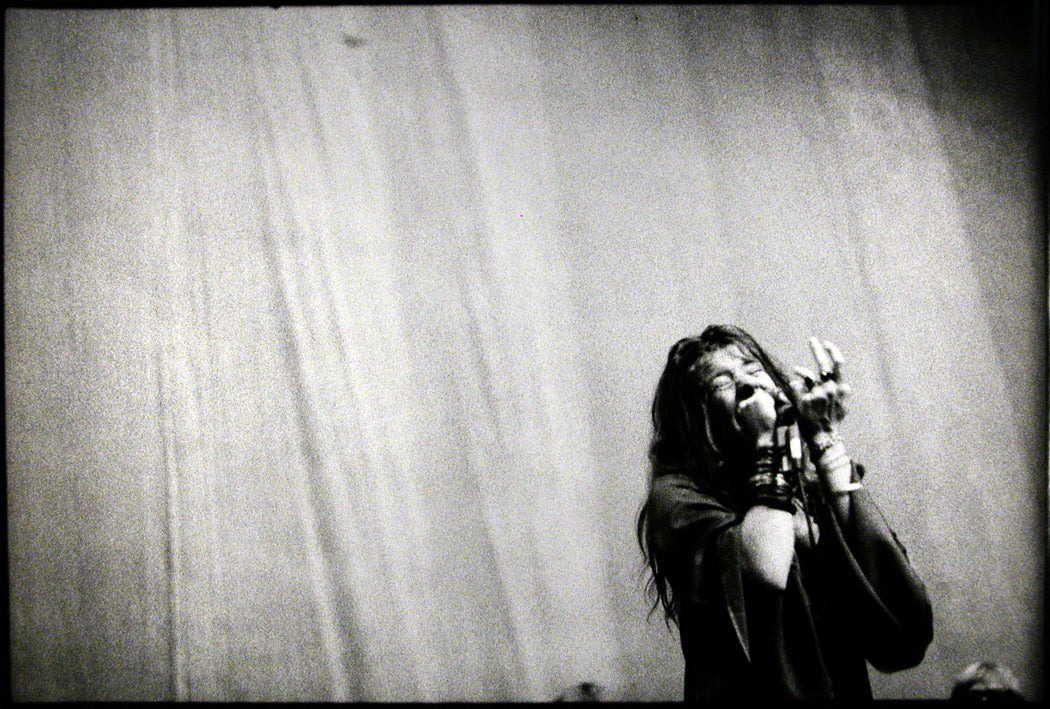
John Max
Janis Joplin at Montreal Forum, Montreal by John Max
 Toronto, ON)
Toronto, ON)
Learn about our Shipping & Returns policy.
Have a question? Read our FAQ.
- Artwork Info
- About the Artist
- About this Photograph
-
November 4, 1969
Gelatin silver print
From the series "Open Passport"
Signed and inscribed "from the exhibition "Open Passport" [NFB Stills-Ottawa, 1972] 1st edition printing, 9C", in ink, au recto
Printed circa 1972
Unframed -
John Max (b. 1936) was born in Montreal to parents of Ukrainian origin who had arrived in Canada in the 1920s. He studied painting with Arthur Lismer and music at the McGill Conservatory of Music before discovering photography in the late 1950s through Lutz Dille, whose work, strongly influenced by Europeans such as Cartier-Bresson, Kertesz, and Doisneau, brought the subjectivity of the photographer to the fore. Max discovered in this approach something that corresponded with his own vision of the human condition. From that point on, he devoted himself to photography, self-taught at first, and then completing his training with Guy Borremans and Nathan Lyons.
Throughout the 1960s, Max worked on assignment for various magazines and for the Still Photography Division of the National Film Board of Canada. During this very productive decade, his work was widely disseminated, particularly in the many exhibitions and publications of the Division. Max also produced photographs for the Christian Pavilion at Expo 67. He represented Canada at the Fifth Biennial in Paris in 1967, and took part in Four Montreal Photographers, an exhibition organized and circulated by the National Gallery in 1968. An exhibition of 57 photographs entitled And the sun it shone white all night longtoured Europe in 1969, sponsored by the Cultural Services of External Affairs Canada.
Max’s photographic vision reached its maturity with the Open Passport – Passeport infini exhibition organized by the NFB’s Still Photography Division and shown at The Photo Gallery in Ottawa in 1972. In this series of 160 black-and-white photographs, mostly taken in the 1960s, Max used the medium as a tool of introspection, to create a diary of his life. He described his undertaking:
“I photograph the inner state – that is what I try to do. These images of friends, family, Indians, strangers on the street reflect my being, conscious and unconscious; and more and more I am becoming aware of the relationship between actions and the attainment of personal liberation. This is what I am concerned with – the liberation of man, an OPEN PASSPORT, a PASSEPORT INFINI.”
As the sequence of images unfolds, people appear who become leading characters in the narrative: a child growing up over the years (Max’s son), a woman going about her domestic chores (Max’s wife), family and close friends getting together. Also recognizable are figures from the Montreal artistic community: graphic artist Vittorio, designer François Dallegret, artist Charles Gagnon, photographers Nina Raginsky, Sam Tata, Guy Borremans, Judith Eglington. We also catch a glimpse of Max’s youthful passion for music: one image captures the intensity of Janis Joplin in concert; a young Leonard Cohen confronts the lens, full of intensity; and in another a nonchalant Frank Zappa is seen waiting in the wings. -
To realize each "Open Passport" image, John Max purchased 10 pieces of gelatin silver paper, and that allotment was used for all test strips, preliminary prints, etc., that were required to make a satisfactory print. After the first success was achieved, he used the remainder of the allotment to make additional prints. This methodology determined that no more than 8 or 9 photographs were made at the time, and in some cases difficult negatives only exist in fewer than 5 prints. It is widely believed that he never printed from those negatives again.


